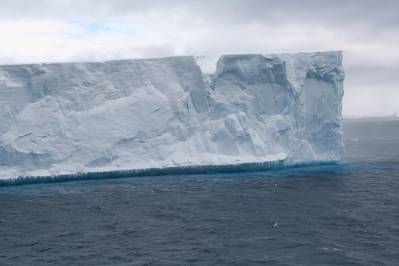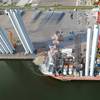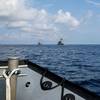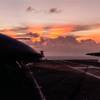Rosatom: Northern Sea Route to Cost 735 bln Roubles
Russia's ambitious Northern Sea Route (NSR) requires 735 billion roubles ($11.7 billion) in investments, with the state budget to provide a third and the rest to come from companies and banks, the head of state nuclear firm Rosatom, Alexey Likhachyov, said.
Rosatom, the world's top nuclear company in terms of foreign orders, was selected by the Russian government to operate the NSR - the Arctic route Moscow wants to turn into a new Suez - coordinating development of the project among its users.
This month, Rosatom agreed with the Russian Direct Investment Fund, Nornickel, one of the world's top nickel and palladium producers, and DP World, among leading global port operators, on joint development of the NSR.
The firms have yet to agree on how their NSR partnership will work. DP World wants to operate the ports and nearby infrastructure that Russia plans to build, its chief executive told Reuters.
Likhachyov, whose company will also be responsible for nuclear icebreakers that create "roads" through the thick Arctic ice for ships, said the state budget planned to provide 274 billion roubles for the NSR out of the total investment.
The rest, he said, would come from Rosatom, Rosneft , Novatek, Gazpromneft, Gazprom , Nornickel and other future users of the route, as well as via bank loans.
"As soon as we create commercially attractive cargo shipment, people will be ready to invest in roads, railways, ports and terminals as this will become profitable," Likhachyov said.
Novatek, Russia's biggest private gas producer, is already using the route to ship liquefied natural gas (LNG) to Europe and Asia, saving on costs and making its LNG competitive on the global market.
Gazpromneft, Russia's third-biggest oil producer, is also exporting some of its oil via the NSR.
By 2024, if projects involving LNG, gas condensate, oil, coal, precious metals and other goods are implemented by the Russian companies, cargoes totalling around 80 million tonnes per year will be shipped via the NSR to Europe and Asia.
Likhachyov said Russia needed to develop the NSR in a way that allowed transportation costs to create a competitive environment for goods.
"There is no point for Novatek to increase LNG (production) if it does not fit into the global ... competitive zone, along with (the LNG costs of) the United States and other producers," he said.
Russia aims to grow big in LNG exports, matching volumes produced by Qatar, one of the world's top exporters, mainly thanks to Novatek's new projects.
Likhachyov said that for the NSR to fly, users would need to clinch a deal: "We will guarantee shipment of certain volumes at a certain price and you would guarantee supplies of certain volumes ... This is likely to be a price formula."
NEW NUCLEAR ICEBREAKERS
The Zvezda shipyard in Russia's far east, with Rosneft among its shareholders, will build a new class of nuclear icebreaker, the Lider, which should be ready by 2026 to break the thick, arctic ice and allow cargo ships to move year-round.
Likhachyov said a single Lider-class vessel would cover Russia's cargo needs but "to compete with Suez", three Liders were needed by 2030-2035 to maintain a speed of 18-20 km per hour and keep shipping costs stable.
"The NSR has to be international. We cannot create such a colossus only to ship hydrocarbons from our north. This is not businesslike ... If China and India will truly decarbonise, cargoes bound for those countries will grow fast."
Reporting by Katya Golubkova and Gleb Stolyarov













